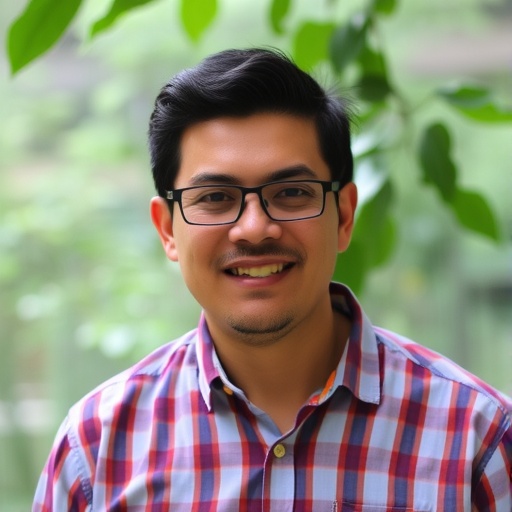In an ambitious and collaborative effort to unravel the complexities of monsoon rainfall variability over the past millennium, researchers spanning six institutions have come together under a $1.2 million National Science Foundation grant. At the forefront of this project is Sujata Murty, assistant professor in the Department of Atmospheric and Environmental Sciences at the University at Albany. This multi-disciplinary initiative aims to integrate a myriad of paleoclimate data sources — including stalagmites, corals, lake sediments, and tree rings — into a unified analysis that could profoundly deepen understanding of the Asian, Indonesian, and Australian monsoon systems and provide critical insights into their prospective future behavior amidst global climate change.
Monsoons play an indispensable role in the climatology of the Eastern Hemisphere tropics, delivering the bulk of freshwater that sustains nearly 40 percent of the global population. Despite such importance, regions affected by these monsoon systems — particularly in the Southern Hemisphere — remain data deficient. This scarcity impedes both historical reconstructions and predictive modeling efforts. Historically, individual climate proxies have offered fragmented glimpses into past monsoon dynamics. Stalagmites, for example, capture precipitation variability through isotopic signatures in calcite layers, while tree rings chronicle climatic conditions on terrestrial ecosystems. Similarly, lake sediments archive hydrological changes, and coral skeletons record oceanographic and atmospheric shifts.
Central to this research is the crucial role of coral paleoclimatology. Corals develop annual growth layers analogous to tree rings, embedding chemical and physical markers indicative of past environmental conditions. These biogenic archives can calibrate and validate paleoclimate reconstructions with unprecedented temporal resolution. Murty’s expertise as an oceanographer positions her uniquely to harness this resource. She employs a comprehensive, publicly accessible database of coral records spanning the Indian Ocean, Maritime Continent, and Pacific Ocean, which she helped to establish. Through meticulous spatial and temporal analyses of this corpus, Murty aims to elucidate the nuanced ways monsoon precipitation has shifted over centuries, and to clarify the underlying climatic mechanisms driving these variations.
The integration of diverse paleoclimate proxies with advanced climate models represents a frontier in climatological research. By coalescing data derived from stalagmites, corals, lake sediments, and tree rings, the team endeavors to map monsoonal changes from medieval times, preceding extensive anthropogenic influence, through to contemporary periods marked by warming trends. Climate models provide the essential framework for interpreting these data within dynamical systems, allowing researchers to simulate past atmospheric and oceanic circulation patterns and to evaluate hypotheses about monsoon drivers. This comprehensive dataset-model synergy holds the promise not only to decode past monsoon behaviors but also to refine predictions of future variability at decadal scales, crucial for drought and flood risk management.
Empowering the next generation of climate scientists is a significant dimension of this endeavor. Seventeen undergraduate researchers across the partner institutions — including University at Albany, Cornell College, Iowa State University, University of New Mexico, Occidental College, and Woods Hole Oceanographic Institution — will engage directly in data collection, statistical analysis, and modeling tasks. This hands-on involvement nurtures interdisciplinary skills at the interface of paleoclimatology and oceanography, fostering expertise that is vital for addressing evolving climate challenges. Beyond academia, the project’s outreach extends to K-12 education, via partnerships with Nord Anglia Education, bringing accessible, age-appropriate climate science content to classrooms in regions as varied as Iowa, Los Angeles, Albuquerque, and northern Australia.
Such an expansive and integrative approach is especially important given the inherent complexity of monsoon climates. These systems are modulated by a suite of ocean-atmosphere interactions including the Indian Ocean Dipole, El Niño–Southern Oscillation, and land surface feedbacks, all operating across various temporal and spatial scales. By examining coral-derived sea surface temperature and salinity proxies alongside terrestrial and speleothem records, researchers hope to discern patterns of monsoon intensification, weakening, or shifts in onset timing. This knowledge is key for understanding the sensitivity of these vital systems to both natural variability and anthropogenic forcings such as greenhouse gas emissions and land use changes.
Moreover, the project’s commitment to open data frameworks ensures that the generated coral paleoclimate records and integrated datasets will be accessible to the wider scientific community. This transparency promotes collaborative verification, replication, and expansion of findings, crucial under conditions of climate uncertainty. Ultimately, the refined reconstructions and mechanistic insights generated by this work will contribute to more robust climate models, enhancing their skill at simulating monsoon rainfall extremes — a critical need for governments and communities dependent on monsoon rains for agriculture, water supply, and disaster preparedness.
Sujata Murty’s leadership in co-directing the UAlbany Paleoclimate Lab exemplifies how targeted expertise in paleoceanography and coral geochemistry can drive forward integrative climate science. Her work leverages isotopic and elemental analyses to reconstruct historical sea surface conditions, illuminating how oceanic changes propagate to atmospheric circulation and precipitation patterns. This causal chain understanding is central to deciphering past monsoon variability and projecting future trends. As the climate warms, regions reliant on monsoon rains face increasing risks of drought, flooding, and related socioeconomic impacts, making such foundational research imperative to inform adaptive strategies.
In conclusion, this collaborative, multi-proxy study of Eastern Hemisphere monsoons over the past thousand years represents a transformative stride in paleoclimate science. By converging coral paleoclimate records with terrestrial proxies and climate modeling, researchers are poised to illuminate the intricate dynamics governing monsoon patterns across vast spatial and temporal scales. The anticipated improvements in decadal forecasts and climate projections will not only deepen comprehension of monsoon behavior under natural and human-induced influences but also enhance resilience planning for billions globally who depend on these critical rainfall systems.
Subject of Research: Paleoclimate reconstruction and modeling of Asian, Indonesian, and Australian monsoon rainfall variability over the last millennium, with a focus on coral paleoclimate data integration.
Article Title: Unraveling a Millennium of Monsoon Mysteries: Integrating Coral Records and Climate Models to Predict Future Rainfall in the Eastern Hemisphere Tropics
News Publication Date: October 30, 2025
Web References:
https://mediasvc.eurekalert.org/Api/v1/Multimedia/b6b3565a-419b-4ade-80f4-541895fd02bb/Rendition/low-res/Content/Public
Image Credits: Patrick Dodson
Keywords:
Paleoclimatology, Oceanography, Paleoceanography, Climate change, Climate data, Climate variability, Monsoons, Extreme weather events, Precipitation




